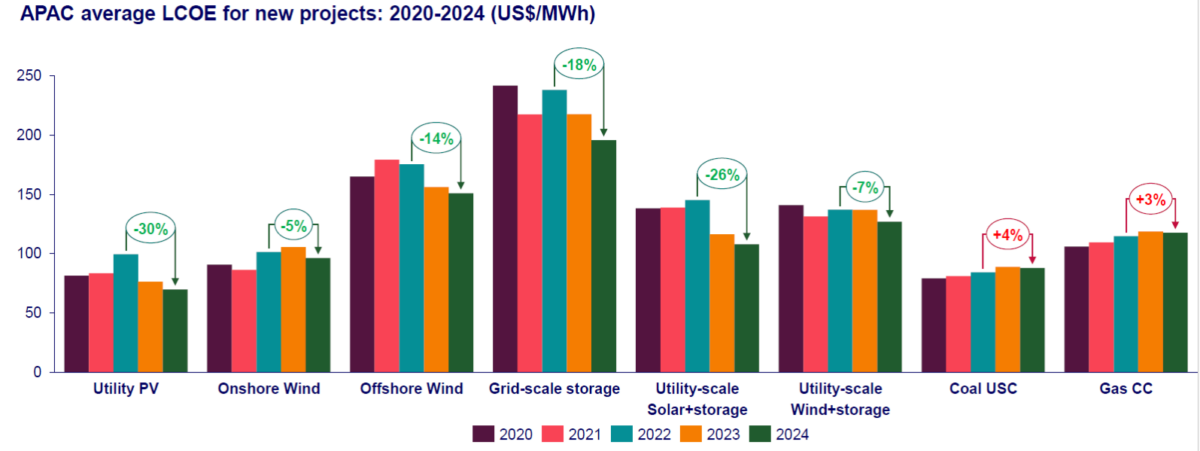“Utility PV solar has emerged in 2023 as the cheapest power source in the region, while onshore wind is expected to become cheaper than coal after 2025,” said Alex Whitworth, vice president, head of Asia-Pacific power research at Wood Mackenzie. “Renewables firmed with battery storage is becoming competitive with gas power today but will struggle to compete with coal before 2030.”
Big PV emerged as the cheapest power source in 11 out of 15 countries in the Asia Pacific in 2023. According to WoodMac, PV power costs saw “a significant decline of 23% in 2023, marking the end of two years of supply chain disruptions and inflation.”
Looking ahead, Wood Mackenzie predicts that new-build solar project costs will drop by another 20% by 2030, driven by falling module prices and increasing oversupply from China.
Meanwhile, distributed solar costs fell 26% in 2023, with the technology now 12% cheaper on average than residential power prices. Wood Mackenzie said this creates large potential for more rooftop solar applications.
“This trend has made distributed solar increasingly attractive for end-users in many markets in Asia Pacific, with costs already 30% below rising residential tariffs in China and Australia,” said Sooraj Narayan, senior research analyst, APAC power and renewables at Wood Mackenzie. “However, some markets like India with subsidised residential power tariffs will need to wait until 2030 or later to achieve competitive distributed solar prices.”
Popular content
Overall, China is leading the way in bringing down the cost of renewables, with utility-scale PV, onshore wind, and offshore wind being 40% to 70% cheaper when compared to other Asia-Pacific markets.
In December, Ernst & Young said in a report that the global weighted average LCOE for PV is now 29% lower than the cheapest fossil fuel alternative.
Earlier this year, Wood Mackenzie predicted strong yet flat global PV growth through to 2032. It estimated that around 350 GW of global solar will be annually installed for the next eight years.
This content is protected by copyright and may not be reused. If you want to cooperate with us and would like to reuse some of our content, please contact: editors@pv-magazine.com.


3 comments
By submitting this form you agree to pv magazine using your data for the purposes of publishing your comment.
Your personal data will only be disclosed or otherwise transmitted to third parties for the purposes of spam filtering or if this is necessary for technical maintenance of the website. Any other transfer to third parties will not take place unless this is justified on the basis of applicable data protection regulations or if pv magazine is legally obliged to do so.
You may revoke this consent at any time with effect for the future, in which case your personal data will be deleted immediately. Otherwise, your data will be deleted if pv magazine has processed your request or the purpose of data storage is fulfilled.
Further information on data privacy can be found in our Data Protection Policy.